The Ultimate Guide to Buying a Mountain Bike | 2022
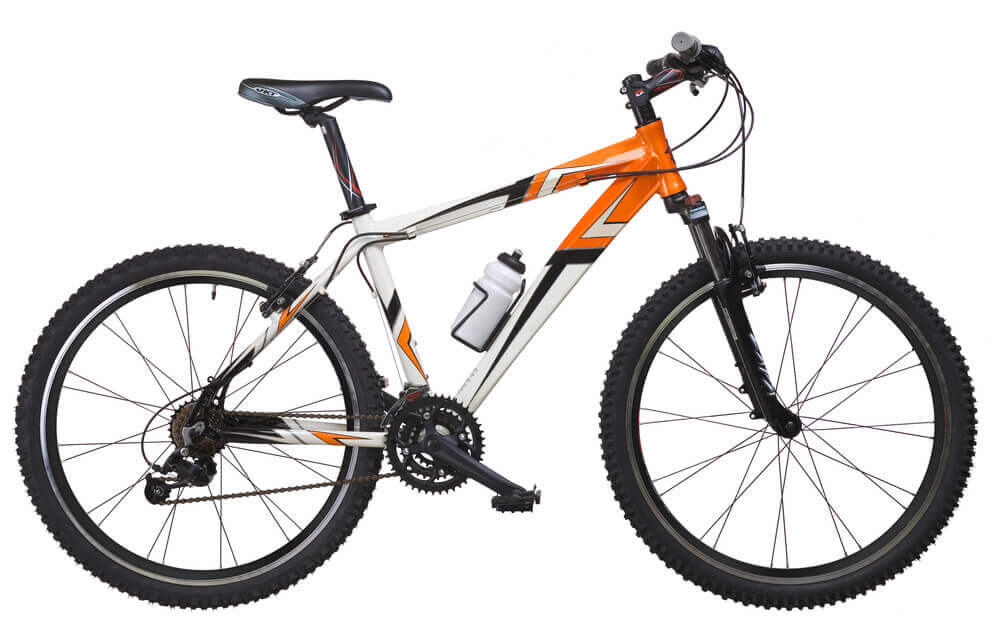
Like other bikes, there is a lot you can learn from mountain bikes. This regards how they work, differences among the various models available and most importantly, what to consider when shopping for these bikes. The seemingly overwhelming number of options when buying a mountain bike may make this process seem complicated.
However, worry not as we got you covered. This is an ultimate guide to buying a mountain bike below outlines all the info that you need to know about mountain bikes. We are certain that by the time you get to the last detail, you will feel like a mountain riding expert before purchasing your bike. Have a look.
What is a Mountain Bike
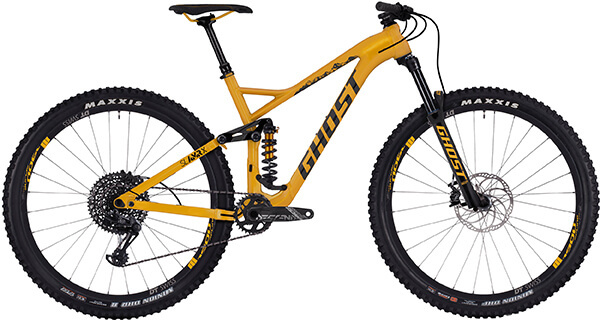
As the name suggests this bike is great for mountain riding, but it is not meant that you can’t ride this bike on the street. This is perfect for those riders who want the adventitious ride on rough terrains like the trail, mountain or hill.
Typically this bike constructed with a lightweight frame, front or full suspension, great knobby tires with plenty of traction, strong wheels rims, reliable brakes multiple gear ratios to climb uphill easily. This bike is a perfect partner on hilly terrain, single-track, various unpaved terrain.
A mountain bike is designed for both terrains. You can easily overcome the obstacles you find on the path. Which includes bumps, potholes, large rocks, tree roots, etc.
Why Should You Buy A Mountain Bike

- Multiple gears which make the uphill climb easier
- You can elude regular traffic more quickly on a mtb.
- Mountain bikes are more versatile than the other bikes.
- Rolling with mountain bikes has never been less trendy and fun
- They offer a more challenging exercise as compared to other bikes.
- Super tires which provide extra cushioning and a super relaxed feel
- These bikes have quite some additional features that make bike lovers go for them instead of other bikes:
- Mountain biking a complete and good workout for your entire body. It is confirmed that bike riding improves your cardiovascular muscles fitness for spinning at the high cadence for a long time.
- Mountain bikes offer many riding styles for the rider to choose from: these are Cross-Country Cycling, All-Mountain cycling, Freeriding, Enduro cycling, DH and Lift-assisted cycling.
- Of quietness and peace: often, Mountain bike trails lead you to remote, peaceful places, where you can enjoy the friendly nature, meditate upon your life, and enjoy the great blessings outdoors have to offer.
- Allows your proximity to nature. Mountain bikes enable you to tread through unbeaten paths in a bid to get closer to nature you heartily desire approaching
- They boost your confidence. With a mtb, the feeling that comes along as you make it up a monster climb, balancing your way across a very narrow ladder bridge or maybe carving your way down a technical descent is an awesome one.
- Perfect leisure. Biking is an escape from boredom. When you are on your bike, it is only the bike and the ride that you get to think about. Isn’t this enough reason to get out there and ride.
Difference Between Men’s and Women’s Mountain Bikes
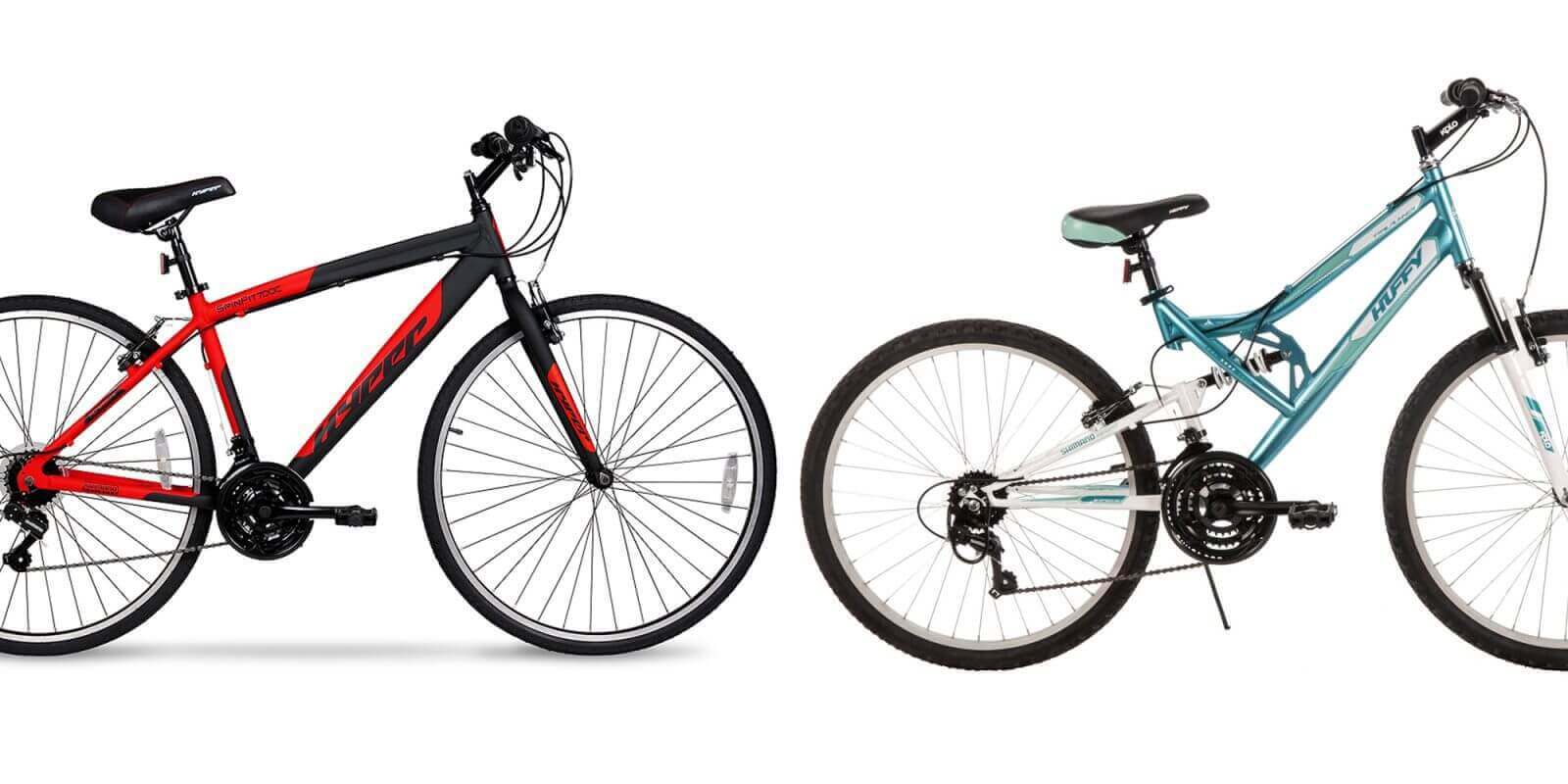
In the past, there was some core difference between men’s VS women bicycles. But due to the revaluation of designing frame shapes better more the differences are not so important nowadays. For the most part, Women’s bikes frame is slightly smaller than men’s bicycle sometimes thinner as well. The Saddles seat post also have a minor difference like women saddle may have different shapes angles as well to perfectly fit them as they feel comfortable.
Some women riders like to have a women’s mountain bike that has the specific geometry for women, but others are easily fit on men’s bikes. So in the end, we can call that it especially depends on some preference like the comfortable body structure of the rider.
What kind of riding you can do on a mountain bike

Not all MTB’s are designed in a fair manner. This statement goes without saying. The greatest thing about mountain biking is that it offers loads of choice and variety, that is if you’re really into cycling and you’ve been at this for years, spend your leisure time running up and down trails. However if mountain biking is something you are just getting introduced to, and that you want to get into then you ought to consider the exact type of bike, and the correct riding offers you want to do.
These are some of the rides your Mountain bikes can provide you;
- Pump Track
- Uphill riding
- Dirt Jumping
- Off-road Only
- Downhill riding
- Commuting only
- Freeride / Shore riding
- Both road and off-road
- Cross Country (XC) / Trail Riding
What are the different types of mountain bikes
-
TRAIL BIKES
Trail mountain bikes are light, versatile and perfectly capable of climbing as well as descending, conquering whichever kind of trails they face. These are the right bikes for anything ranging from a quick stint on the trails to a brutal day of racing. I don’t think there are better bikes to offer this level of no-compromise performance. Versatility is paramount here.
The last time I was on such a bike I loved running the 116mm travel Fox Float DPS rear shock wide open all the time, it made me feel like I could enjoy traction everywhere without sacrificing power transfer on this Mountain Bike.
-
XC / CROSS COUNTRY BIKES
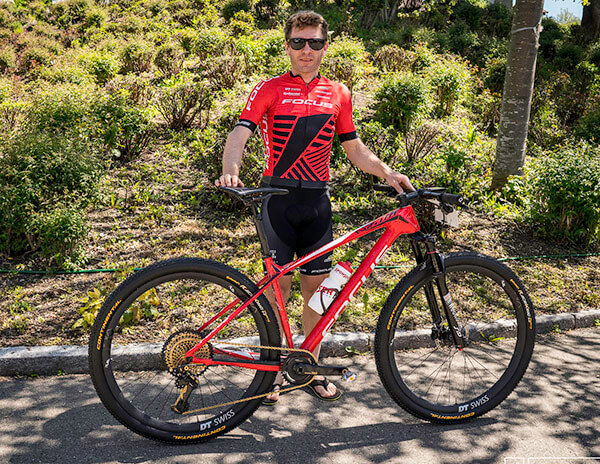
XC mountain bikes also referred to as Cross-Country Mountain Bikes are the lightest, smartest bikes you are ever going to find going on the trail. They offer you the ultimate cutting edge in performance. For this reason, I discovered that I could cycle as fast as my legs and heart would will, and come back to the house in the end with a grin on my face. One would easily mistake them for electric bikes since all you have to do is point these race-ready rockets in the right direction and voila! The bikes typically weigh between 7 and 16 kilograms only (15 and 35 lb).
This kind of bikes are structured in such a way that the rider is placed in a little more upright, comfortable position than on a road bicycle, but still much less than on a downhill bike.
-
ALL-MOUNTAIN / ENDURO BIKES
Enduro mountain bikes deliver a unique level of performance. It is designed to be able to create its speed category during the uphill climb and down the slope. Recently this mountain bike won the bike-against-bike races by a landslide.
This bike is more nimble than any other I have ever tried. It is much of a blast since it is rocket fast as well. It can go round the bend competently and roll over anything on its way to the finish line.
This is the kind of bicycle that makes every rider feel like he’s already won the race even before it begins. Enduro Mountain bikes are not quite playful, especially at speed, but the bike is still likely to send jumps, maintaining trajectory like a bullet.
-
DOWNHILL/ PARK BIKES
Downhill/ Park Mountain Bikes are specially tailored for the young bike the riders whose interests are sloppy terrains. Most of these bikes have full suspension setups. You will find that these bikes have either air or coils shocks.
-
FREERIDE BIKES
Freeride bikes have some standard features similar to those on downhill mountain bikes. The only significant difference is the purpose for which they are made. The free rides have a little concern about the weight of the bike, and the frame is a lot more compact. The compressed frame makes jumping and other stunts a lot easier.
-
ELECTRIC BIKES
Motorized bicycles are becoming popular, thus getting an electric mountain bike is becoming overly possible. These bikes often incorporate a motor and battery system in their design which assists the pedaling effort of the rider. Power of the system is often adjusted via an included control system located at the bike’s handle.
Due to these attachments, these bikes are heavier than other non-motorized equivalents but compensate this by making it easy to climb up even the steepest gradient. Nonetheless, note that riding the e-bike isn’t a piece of cake. They deliver much workout benefits that are better suited to training.
-
FAT MOUNTAIN BIKES
Fat bikes are a new model of mountain bikes that have been increasing in popularity over the last few years. These bikes typically use oversized tires, typically ranging between 3.8 inch or larger and rims of 2.6 inches or wider. They are designated and perform well in low ground pressure which provides comfortable rides on soft and unstable terrains such as sand, snow or mud. They are a popular choice for adventure riders who prefer off the beaten tracks or those who want fancy different looking bikes.
-
DIRT-JUMP BIKES
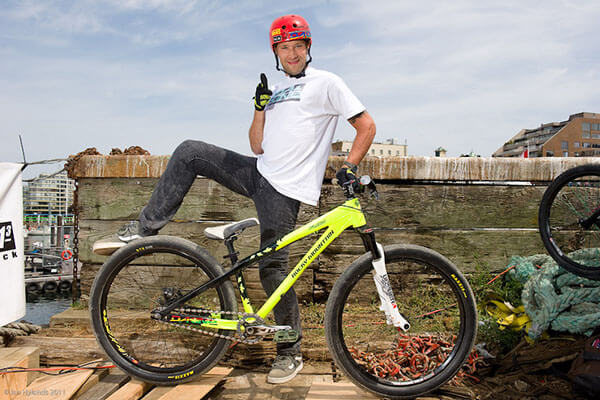
Just as the name suggests, they are used for hitting pump or jump tracks. To withstand this, they are made of tough frames which are easy to move in the air, one gear for simplicity and short travel forks.
-
SINGLE-SPEED BIKES
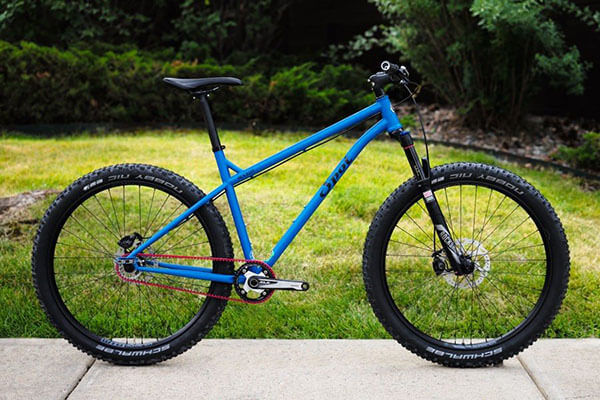
Single speed bikes are popular with masochists and only have one gear. They lack a lot of moving parts making them simple to maintain. Many people prefer this bike model for use during winter to avoid damaging other bikes. These bikes are the hardtail and fully rigid.
Mountain Bike Sizing Guide- what size mountain bike do i need
It’s a vital part for a newbie who doesn’t have any knowledge bike sizing or doesn’t even tested any bikes before. Before going to purchase the mountain bike from online, you should know bike sizing which size is perfect for you. If you don’t know, then you will suffer many problems after purchasing the wrong size bike. So it’s very important which you can’t avoid. Also, I suggest you test a bicycle from your friend or neighbor if you didn’t own any bike before.
MENS’ MOUNTAIN BIKE SIZING CHART
| Your Height Feet and Inches | Your Height Centimeters | Bike Frame Size Inches | Bike Frame Size Centimeters | Descriptive Size |
|---|---|---|---|---|
| 4'10" - 5'2" | 148cm - 158cm | 13" - 14" | 33 - 37 | XS - Extra Small |
| 5'2" - 5'6" | 158cm - 168cm | 15" - 16" | 38 - 42 | S - Small |
| 5'6" - 5' 10" | 168cm - 178cm | 17" - 18" | 43 - 47 | M - Medium |
| 5'10" - 6'1" | 178cm - 185cm | 19" - 20" | 48 - 52 | L - Large |
| 6'1" - 6'4" | 185cm - 193cm | 21" - 22" | 53 - 57 | XL - Extra Large |
| 6'4" - 6'6" | 193cm - 198cm | 23" - 24" | 58 - 61 | XXL - Extra Large |
WOMEN’S MOUNTAIN BIKE SIZING CHART
| Your Height Feet and Inches | Your Height Centimeters | Bike Frame Size Inches | Bike Frame Size Centimeters | Descriptive Size |
|---|---|---|---|---|
| 4'10" - 5'2" | 148cm - 158cm | 13" - 14" | 33 - 37 | XS - Extra Small |
| 5'2" - 5'6" | 158cm - 168cm | 15" - 16" | 38 - 42 | S - Small |
| 5'7" - 5'9" | 168cm - 178cm | 17" - 18" | 43 - 47 | M - Medium |
| 5'10" - 6'1" | 178cm - 185cm | 19"+ | 48 + | L - Large |
Tips: You’ll find other types of bicycle size chart here
Mountain Bikes Comparison With Other Bikes
The path to choosing mountain bikes comes a long way, including comparing with other bicycle models. Bearing this in mind, you should know that mountain bikes share some similarities with other bike models. In the same way, there are some vivid differences. Well, here is how mountain bikes compare with other popular bike models.
-
MOUNTAIN BIKE VS BMX
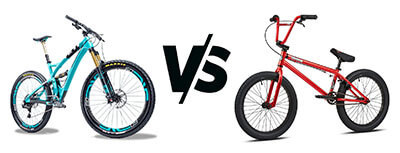
Besides being bikes, Mountain bikes and BMX models have little in common. Compared to mountain bikes, BMX is smaller and very compact. They also have a thick frame which makes them heavier per inch. The saddle of BMX bikes is low thus changing the overall riding position. This is perhaps why most BMX riders are rarely in their seats.
When it comes to functionality, BMX is made to handle jumps and stunts but has no shock absorption thus relies on thick and over-sized tires. Many people prefer taking these bike models for courses and park ridings rather than trails and long-distance traveling.
Mountain bikes, as mentioned before, have multiple gears whereas BMX has only one gear. Braking is tough as some have only rear brakes.
-
MOUNTAIN BIKE VS ROAD BIKE
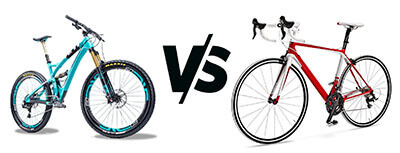
Compared to mountain bikes, road bikes can be said to be directly opposite, in almost every aspect.
Road bikes have a small frame with thin tubing whereas mtbs have thick frames, of course, intended to provide the much-needed stability and absorb mountain-riding shock.
Mountain bikes are designed for long distance riding thus have properly shaped frames to provide riding enthusiasts with a relaxed riding position compared to road bikes which are designed in a position that encourages leaning forward.
Moving on, mountain bikes are designed to provide great suspension and shock absorbing capabilities opposed to road bikes, which have no form of suspension, both the front and back wheels. Due to this, any shock absorption experienced when riding is left for the tires and the slight frame flex to handle, often resulting in a stiff ride.
Seating of mountain bike is slightly plusher and provides a wide amount of coverage compared to road bikes, which have small seats and little padding. Keep in mind that road bikes aren’t designed for long rides!
Concerning the handlebars, mountain bikes have straight handlebars rather than the downward drops of the road bike. Some may have bullhorn attachments at the end meant to enhance the comfort of the rider, especially when the rider wants to sit upright during flat portions of the trail.
The shifting system and drivetrain is, of course, an important aspect of both bikes. Road bikes cover all types of terrains, but in moderate steepness. This is perhaps why they have more range, to accommodate everything ranging from steep climbs to flat sections. Nonetheless, mountain bikes have multiple gears with different ratios.
The wheelset is the other visible differentiating factor. Mountain bike’s wheels are strong durable compared to road bikes for obvious reasons. Their tires are also extra wide and commonly come with knobby treading for enhanced grip and better shock absorption properties. On the other hand, road bikes come with skinny, smooth tires.
Brakes seem to be the unifying factor between these two bike types. Both bikes can use either rim caliper brakes or disc brakes. To sum this up, road bikes are entirely meant for paved roads making them fast and more efficient than mountain bikes.
-
MOUNTAIN BIKE VS HYBRID BIKE
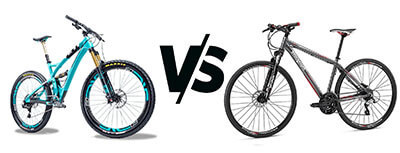
It would be better if you read this bearing in mind that hybrid bikes are somehow a mashup between road and mountain bikes. This is done so to offer much better speed and efficiency than mountain bikes while retaining the ruggedness and comfortable riding position of a mountain bike.
That said the frame of a hybrid bike is an equal combination of both bikes. It is a result of a thicker, sturdier frame obtained from the mountain bike and light, skinner road bike frame. This saves on the bike’s weight but retains the casual riding position and ability to handle uneven terrain and abuse easier.
The gear system and braking system are not much different. They offer sufficient gear options to match any riding scenario. Handlebars and brake levers resemble those of a road bike, though its stem could be quite long.
The tires and wheels are also similar to those of a mountain bike. However, they are on the skinnier side of this spectrum. Hybrid bike tires feature light treading for better traction and grip on wet and dirty conditions.
If you need a commuter bike, then opt for hybrid bikes. They expertly handle some light off the road riding as well as paved trails. They are a stripped version of mountain bikes, which offer additional speed and maneuvering.
What’s the Top Mountain Bike Brand for your needs
- DIAMONDBACK
Mountain bike riders always want to seek out newer challenges and adventures actively. Diamondback mountain bikes are the perfect machines for this purpose whether you are a trail-seasoned vet or going cycling into the woods for the very first time.
- MONGOOSE
This company is known to have an urban bike in their stores for every rider, ranging from ultra-hip single speeds to hybrid bikes that can conquer any terrain.
- GIANT
These are one of the biggest and famous bicycle names currently in the market. This company has revolutionized the cycling industry by producing high-quality bikes in all aspects.
Others top mountain bike brands you are likely going to find on the market are;
• Scott
• Trek
• Merida
• Santa Cruz
• Cannondale
What should be the mountain bike price range? How much do I need to spend?

How much you want to spend on a mountain bike its totally depends on your riding skills & budget. If you are a beginner rider then you can choose any hardtail or full-suspension mountain bike under $1000. If you are a mid-pro level rider then you can choose any high quality mtbs which comes under $1500-$3000 bikes. Because of this high price range manufacturer used high-end components on this bike to withstand any abuse on the road or hilly terrain. Thats why these bikes are performance-packed bicycle that you can use for any purpose.
If you don’t want to spend much on a starter bike for your entry level riding or riding around the neighbor then I suggest you to choose budget mountain bikes which are comes less then $500.
But there is no mandatory that you can’t buy high-end bike for your beginner riding. Its totally depends on your budget capacity.
Bike Parts or Anatomy of a Mountain Bike
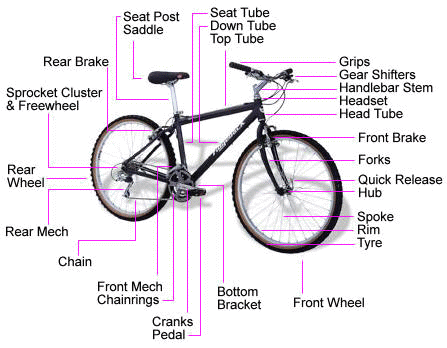
Just like other bikes, a mountain bike is defined by the various interacting components and characteristics. Outlined below is a detailed overview of the mountain bike anatomy and the various differentiating factors. We’ve tried our level best to explain mountain bike parts in-details in this mountain bike buying guide.
What are the type of mtb frame material
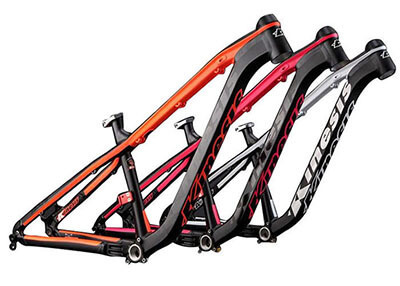
Mountain bikes are mainly built to be rugged and withstand plenty of anticipated abuse. Depending on the specific type of mountain bike, the actual design and shape of the frame vary greatly. For example, take an example of a standard cross country bike or trail bike with a traditional design, flat top tube, an inclined bottom tube, and a triangle rear stay.
Full suspension bikes often differ based on the manufacturer. Mountain bike’s frame encourages the rider to sit in an upright position, for better control and comfort. Besides, it helps with climbing up inclines, unless you need a downhill bike. It is due to this that there is a great variance in the frame materials.
A good number of mtbs are made of either carbon fiber, titanium, steel, aluminum or a combination of these materials. For each material, expect different characteristics, weight, comfort, general feel and of course the cost. Here is a brief discussion on common mountain bike materials, their pros, and cons.
-
CARBON FIBER
Initially, carbon fiber was found in exclusively professional mountain bikes due to its expensive and difficult to work with nature. However, over time, the price has come down with enhanced manufacturing processes, making this material common to mountain biking. This is what has made it a wonder material in modern day bikes.
Its outstanding performance is attributed to its high stiffness to weight ratio, high resistance to fatigue is easily customizable and can be easily molded to any shape. This gives manufacturers a wide array of creativeness and freedom when making frame tube profiles and shapes.
- Strength
- Durability
- Directional
- Corrosion resistance
- Low thermal expansion
- High stiffness in weight ration
- Finite control over use of materials
- If fractured, there is a high failure potential
- Requires high labor and knowledge to manufacture
-
ALUMINIUM
Aluminum is perhaps the most popular frame material in modern mtbs followed by carbon fiber — many like it as it results in light and stiff bikes. Compared to carbon fibers, aluminum is easier and overly quick to work with, making it a cheaper option. Aluminum framed bikes are often associated with great power transfer as it takes advantage of the thickness of the tubes used. However, it can result in a harsh ride if there is no suspension.
Manufacturers often add some single, double or triple butting to aluminum frames to enhance their strength without affecting their weight. This involves producing tubes with varying wall thickness, especially thin centers compared to welded ends where strength is crucial.
For instance, a triple butted aluminum frame will have three different wall thicknesses thus can be made lighter without losing any strength. For many bike frame manufacturers, aluminum is a cost-effective solution to high-quality frames, especially to those who need a well-performing mountain bike on a budget.
- Cost-Effective
- Corrosion resistant
- Easy to manufacture
- Good strength to weight ratio
- Fatigue life
- Difficult to repair
-
HI TENSILE / CHROMOLY STEEL
Steel is a common material associated with entry-level bikes. Many like referring it as the no-fuss bike frame material for a good reason. It is durable and relatively inexpensive. However, it is heavier than aluminum and carbon fiber frames and susceptible to corrosion.
Before the inception of carbon fibers and aluminum, steel was the material of choice for Recreational, Professional Mountain and Racing bike frames. The bicycle industry uses two main types of steel, the high tensile and Chromoly steel.
High tensile steel, otherwise known as Hi-Ten, is a cheaper grade of steel commonly used in cheap bikes. It comes with an incredibly low strength-weight ratio thus used for low-end bicycles. On the other hand, Chromoly or CroMo steel is alloyed steel, which offers exceptionally superior strength.
Steel has the advantage of being easily repairable compared to carbon fiber and aluminum. It also offers a surprisingly good level of compliance, thanks to its unbeatable elastic properties. Due to these properties, steel is a commonly used frame material for adventure and touring bikes. As such, riders enjoy the benefit of carrying large amounts of luggage without affecting the bikes performance.
- Durable
- Strong
- Easily repaired
- Cheap/affordable
- Easy to manufacture
- Low corrosion resistance
- Heavy compared to carbon fiber and aluminum
-
TITANIUM
Titanium and steel aren’t far from each other, but titanium is rarely used on inexpensive mountain bikes due to its steep cost. Compared to steel, titanium is lighter, more resistant to corrosion and durable, but overly expensive and labor intensive. Producing high-quality titanium bike frame requires some significant expertise.
To ease this, it is used in frames as an alloy, typically featuring a small composition of vanadium and some percentage of aluminum. A good number of manufacturers may not have tried out titanium in their mountain bike models as there were affordable options such as aluminum and carbon fiber.
Nevertheless, it has a better stiffness to weight ratio compared to steel, is virtually indestructible and offers similar compliance as carbon fiber. This is perhaps why bike frames with titanium feature a lifetime warranty against manufacturing defects.
- Strong
- Durable
- Lightweight
- Corrosion resistant
- Enhanced ride quality
- Labor intensive
- Expensive compared to other materials
Why are there different mountain bike wheel sizes
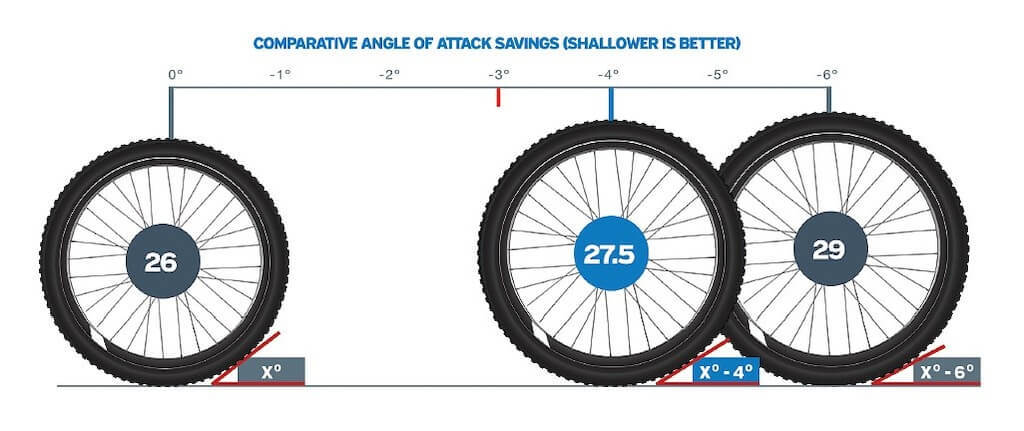
Over time, mountain bike wheel sizes have gotten more complicated than before. Like electronics, more brands are coming up with different innovative pieces. There are so many options in the market to choose from that making a choice would leave you confused. Every size has its unique set of pros and cons. Here are some of the common wheel sizes explained.
-
24-INCH-WHEEL
24-inch wheel bikes are commonly referred to as junior bikes. They are suitable for children and no so tall people. The junior mountain bikes are not any different from other MTBs save for the size. Most of them are Full-size off-road performance in a kid-size package meant for a kid aged between 9 and 15.
-
26-INCH-WHEEL
Considering the dynamics, this will size fast enough. Ride a 26-inch wheel size, and you will be amazed at how much distance you will cover in a short period. It rolls well and assures you of reliable traction all year round. The traction would be of a great benefit on a slippery surface or a wet climate. It also goes well with high volume tires to increase the grip on wet surfaces. Stability is nothing short of top notch.
-
27.5-INCH-WHEEL
27.5″ wheels are also commonly referred to as the 650B. They first appeared on production MTB bikes about five years ago and looked at first like a solid niche that would stay for ages. The size has since become a standard choice that has knocked the 26-inch bike wheel off the showrooms almost entirely. And the manufacturers are not about to hold back its development as they consistently come up with innovative versions of this wheel size.
The tire is good for hard-hitting rides. The size works well with any frame geometry and layouts for extended travel mtbs. In also improves the speed dynamics and increases strength better than the smaller sizes thereby adding to the overall performance of the mountain bike.
-
29-INCH-WHEEL
Riders were reluctant to accept this wheel size over the years. It lay off the limelight for years until Trek put it on adorable production bikes. The move by Trek significantly increased awareness of the 29’’ by using them as a default wheel size for XC MTBs. It works well on bikes with steep geometry, and large frames are it a hardtail or full suspension mountain bike.
The large size often looks appealing to many tall riders with heights of about six feet. Tall riders go for it to look proportional to their bikes and for a good fit. You’re tall, six feet tall, and this is the ideal wheel size for you.
What is the suspension on a mountain bike? Hardtail or Full Suspension?
MTB suspensions narrow down to a hardtail and full suspension bikes. A full suspension bike is one that has shock-absorbing suspensions both at the front and over the back wheel. A hardtail, on the other hand, only has a shock damping suspension at the front. Besides the shock absorbers, the frames may differ substantially in geometric design and feel as bikes are made to achieve different purposes.
Type of Suspension. Rigid, Hardtail or full suspension mountain bike
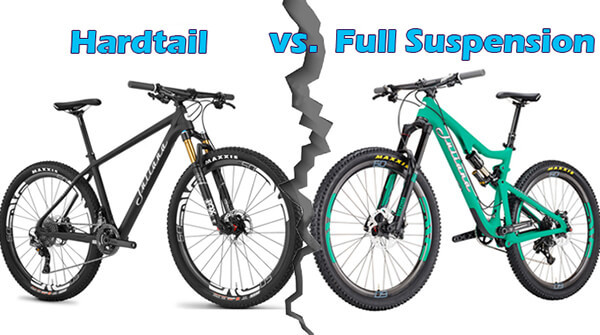
Currently, the suspension is one of the biggest characteristics of modern mountain bikes. Earliest versions of mtbs lacked or had inferior suspension systems. Suspension in a mountain bike serves for a good number of reasons. The first of course is that it enhances the comfort of the rider by providing some buffer between the ground impact and the body.
Presence of shocks on a bike help in absorbing constant impact effects especially when riding over rough terrains, jumps, and landings. Without a proper suspension system, the continuous impact and vibrations of the trail will eventually wear down both the rider and the bicycle, especially in the arms.
Having said that, you could be wondering what a suspension system entails. Suspensions in the bicycle’s fork are provided by a compressible spring when obstacles are met. The spring used can be either coil, air or both. Air springs are highly tuneable with the use of a particular air pump and lightweight.
On the other hand, coil springs are commonly used in low-end bikes and are made from either steel or aluminum. Coil springs can be made of steel or aluminum thus providing excellent durability and a more responsive feel compared to air springs. However, they are quite heavier and require swapping out when they become too soft or firm.
There are three main mountain bike classifications when it comes to suspension systems. They include:
-
HARDTAIL BIKES
This refers to mountain bikes with only the front suspension system and no suspension at the rear wheel, making it a “hardtail.” These bikes often have less moving parts thus typically lighter and quite affordable compared to full-suspension bikes. They also require less maintenance. Some of the advantages of hardtail bikes include:
- Low weight
- Fewer parts to worry
- Better pedal efficiency
- Less expensive – affordable
-
FULL SUSPENSION BIKES
Otherwise known as dual-suspension bikes, they have suspension systems connected to both the rear and front wheels. They offer much more impact absorption and the resultant comfort. Though quite expensive, they have various benefits such as:
- Durability
- Enhanced comfort
- Better downhill ability
-
RIGID / HARDNOSE BIKES
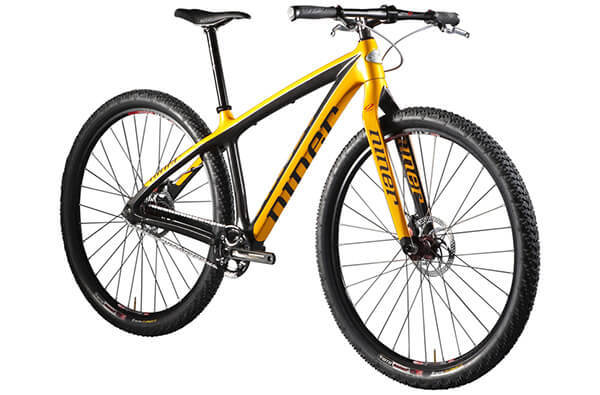
Also known as hard-nosed bicycles, these are mountain bikes with no suspension at all. The lack of suspension systems in their wheels limits/reduces the potential use of these bicycles as it relies on tires for comfort.
They are an excellent choice for riders looking to ride on easy and accessible trails. You will have a rough time cruising rigid mountains and technical trials with this bike type. However, they have an outstanding pedal efficiency and easily maneuverable.
What is a lockout fork on a mountain bike
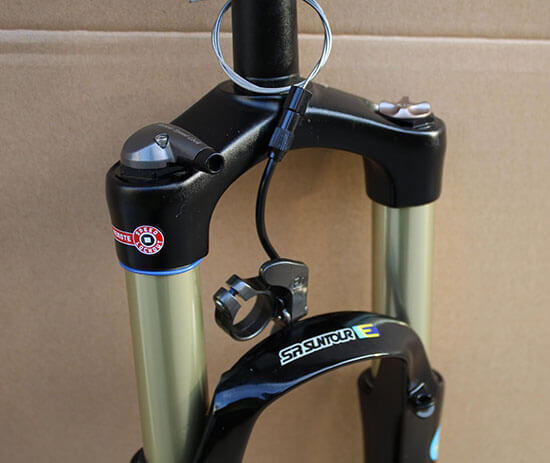
A lockout fork is a tube on a mountain bike that can be turned on and off to make the fork either flexible or rigid. You should lockout the fork if you don’t need any suspension. A useful to disable the suspension would prevent excessive use energy when climbing.
Type of gears in mountain bike
The mountain bike hub gear is a simple system that uses a planetary cog assembly on the rear hub. The hub is joined to a gear shifter by a cable, and a knob on the handlebar controls the movement of the shifter. The cable transfers are varying tensile force which shifts the chain ring from one level of cogs sprocket to another as desired by the rider.
-
LOW-GEAR
The minimum speed on a mountain bike is achieved by combining the smallest front chainring with the largest rear cog sprocket. The lowest speed will enable you to ride uphill with great ease.
-
MIDDLE-GEAR
The intermediate gear is attained by combining the middle front chain ring with the middle rear cog sprocket. This gear is often used when riding on a relatively flat surface.
-
HIGH-GEAR
The highest on a mountain bike is attained by a combination of the largest front chainring cog with the smallest rear sprocket. This gear is often used when riding a mountain bike downhill.
-
SINGLE-SPEED
Just as the name suggests, a single speed MTB is one whose pace does not change. It has one predefined speed and is usually designed for use both even, rough or undulating terrains. It can be utilized in any climatic conditions.
How many gears are on a mountain bike
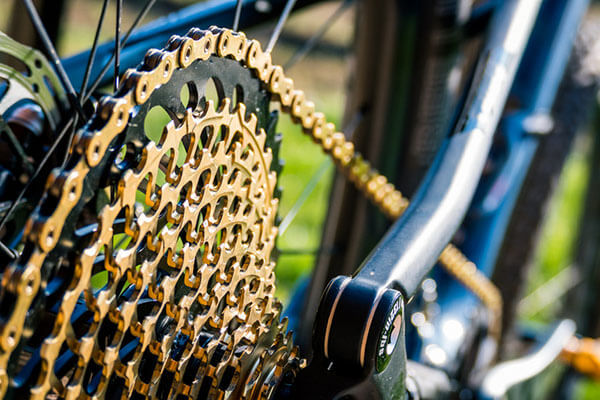
-
18 – SPEED
The 18 speeder is a typical system configuration for many bikes meant for beginners. The bikes have a double chain ring at the front both of which can be connected to any of the nine-gear cassettes at the rear hub.
-
24 – SPEED
Unlike the case with the 18-speed gear, the 24-speed gear has an extra cog for the chainring. The extra cog adds six more speeds to the former system to make it a 24-speed gear system. The result is an enhanced ability to climb steep slopes and improved control of the bike.
-
27 – SPEED
Here too, one more cog is added for the chainring. This extra cog increases the number of speeds by three from 24 to 27. However, the chainring used on the 27-speed system is much thinner. As a result, it usually wears down faster because you will have to change your gears more often as compared to when riding the 18-speed.
-
30 – SPEED
The 30-speed system will have an even bigger chainring cog on the front and two more closely spaced rings. A 30-speed bike is a great ride on a tarmac road with flat terrain.
Do you know the type of brakes on a mountain bike
The braking system is the other crucial component of any mountain bike. You should ensure that the brake system installed on the bike you intend to purchase unbeatable stopping power and utmost reliability. Over time, disc brakes have slowly replaced rim brakes on various mountain bikes.
DISC BRAKES VS RIM / CALIPER BRAKES
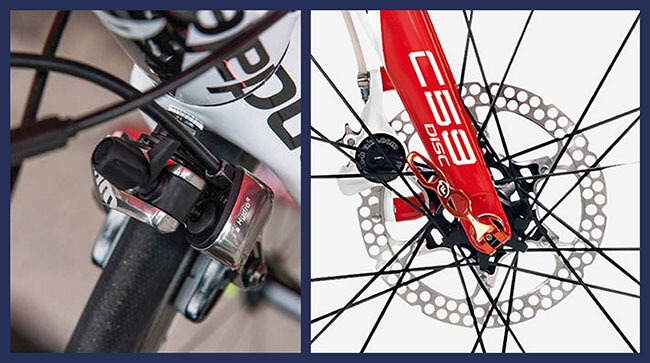
Disc brakes feature brake pads, which grip onto a brake rotor that is mounted on the wheel hub. There are two versions of disc brakes – the hydraulic disc brakes and cable activated or mechanical brakes. Hydraulic brakes offer progressive and strong braking power with less effort whereas cable activated brakes need manual adjusting.
Rim brakes are standard with low-priced mountain bikes, which grip on the wheel rims. They are economical, easy to replace and maintain. However, they gradually wear out the wheel rim, have less stopping power and requires more effort on braking.
Handlebars
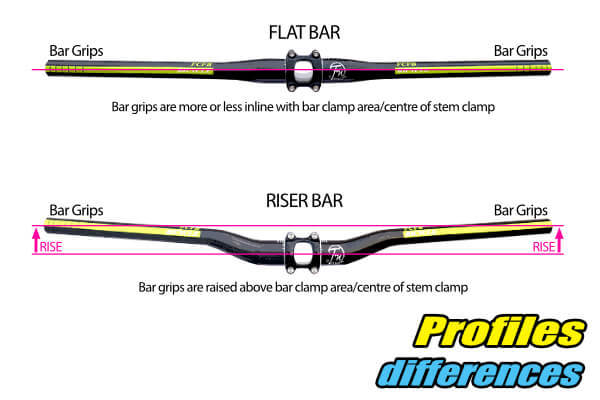
There are two common handlebar types on mountain bikes. They include flat and riser bars, which differ slightly. Flat bars sit relatively lower, which depends on the stem and frame design and are quite lighter. On the other hand, riser handlebars are higher than flat bars and typically wider.
Seat post and saddle
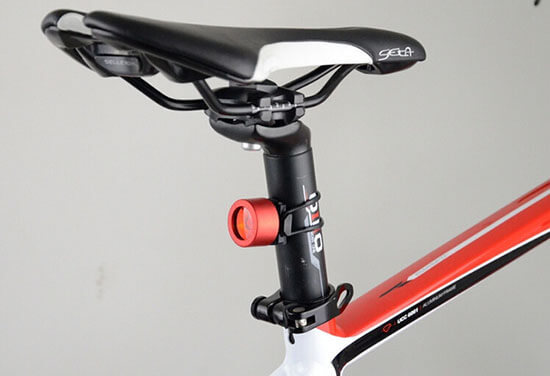
These are matters of personal preference. Saddle in mountain bikes is crucial, but it is better if you get one that properly fits you. The best way of achieving this is by giving it a try and experience the feeling. Note that it may take several rides to get your body used to ride. The seat post is used for positioning the saddle, regarding height and angle. Some mountain bike seat posts have small shock absorbing features for additional comfort.
Pedals
Similarly, the pedal choice depends on the rider’s preference. Clipless mtb pedals are common and require that the rider have special riding shoes, which clip into the pedals. Such pedals offer an increased amount of control as well as improve pedaling efficiency. If you don’t find this interesting, consider holster or strap pedals.
Wheels and Tires
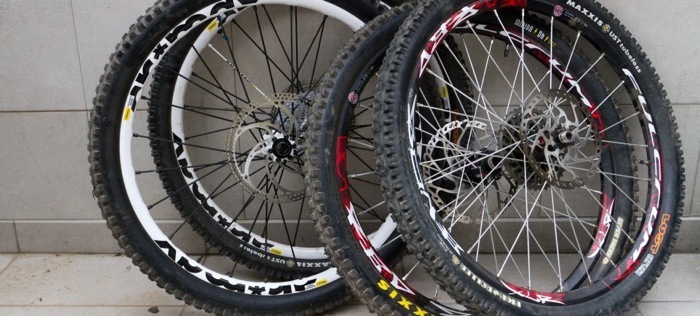
Wheels and tires, collectively part of the wheel set should also be looked into. Mountain bikes traditionally come with sturdy wheels and tires to handle any abuse you may have in mind. All these component are dependent choices, which come in based on other feature considerations.
Conclusion
In this comprehensive guide to buying a mountain bike we have mentioned all these ideas the ins and outs of mountain bikes, will help you to choose the best value mtb for the money you spend. Remember that you should accompany the bike with bike riding gears such as shoes, shorts, helmets, gloves, and pads.
Resource References:
About the Author Zachary Anderson
Hi, I am Zach who is behind Bikefeatures.com I am a fitness geek. I love to ride bicycle regularly to be fit everyday. In winter when riding is impossible in cold then I love to workout at home using indoor exercise equipment. I also love to write in blog to share my knowledge in cycling & workout segment. I hope my articles will help you to be fit in any weather. Thanks!

